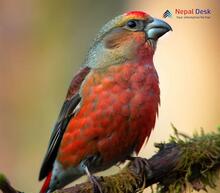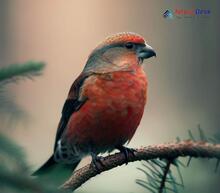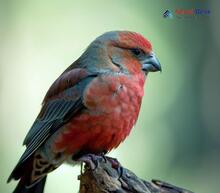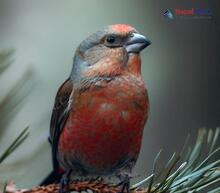Nepal, a picturesque country nestled on the slopes of the magnificent Himalayas, offers breathtaking natural beauty and remarkable biodiversity. Among its many treasures, one gem is often overlooked – the enigmatic bird genus Loxia. Widely known as 'crossbills', these captivating birds have captivated birdwatchers and nature enthusiasts worldwide. Here, we will explore the enchanting world of the Loxia genus in Nepal, pointing out their unique features, habitats, and why they should be on your radar during your next trip to this exceptional country.
A Glimpse Into The Loxia Genus
The Loxia genus belongs to the family Fringillidae and is comprised of birds with a distinct feature: their peculiar crossed mandibles. This unique adaptation allows them to extract seeds from conifer cones with precision and ease. Although there are various types of crossbills around the world, two species are prevalent in Nepal – the Red Crossbill (Loxia curvirostra) and the Himalayan White-winged Crossbill (Loxia leucoptera).
Unveiling Their Unique Adaptations
Crossbills exhibit sexual dimorphism in both size and coloration. Males tend to be larger with a striking red or orange plumage, while females display a duller green or yellow hue. Bold colors not only lend them an attractive appearance but also play a crucial role in securing breeding partners.
The most iconic feature of these birds is their crossed mandibles, which evolved over time to facilitate seed extraction from cones. Loxia species usually forage high up in coniferous trees such as pines or firs, where they use their powerful bills to pry open cones and extract seeds with dexterity.
Exploring The Habitat Of The Loxia In Nepal
The mesmerizing Loxia birds can be found in various habitats within Nepal, stretching from the subtropical lowlands (Terai) to towering elevations as high as 4,000 meters. While the Red Crossbill predominantly resides in the lower and middle-elevation forests, the Himalayan White-Winged Crossbill inhabits higher altitudes in coniferous ecosystems.
Timing Your Birdwatching Experience
To catch a glimpse of these intriguing birds, plan your trip between the months of November and April, when they actively forage on conifer seeds. Both species exhibit nomadic behavior and may travel long distances in search of food. However, with patience and a keen eye for bird activity, you are likely to encounter them flitting between trees or even hear their recognizable flight calls.
Experiencing The Loxia: A Rewarding Venture
Adding Loxia watching to your Nepalese adventure promises to be an unforgettable experience. Witnessing these beautiful birds thriving in pristine natural landscapes is genuinely rewarding for both nature enthusiasts and casual tourists alike. So gear up, grab your binoculars, and embark on a fascinating journey to uncover the secrets of the bird genus Loxia amidst the enchanting lands of Nepal.




